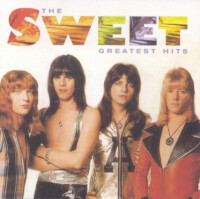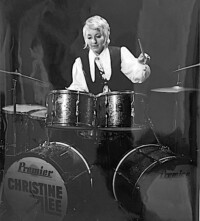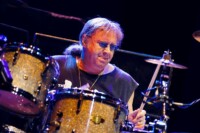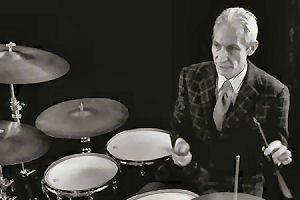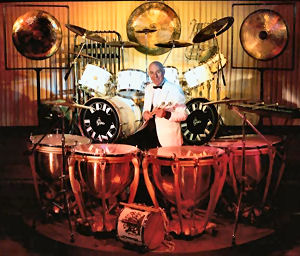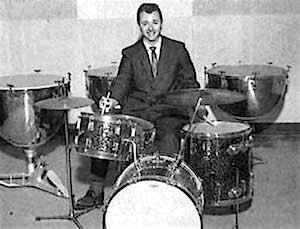 Murrey Mizzell ‘Buddy’ Harman was born in Nashville on December 23rd 1928 when Music City must have been a completely different, much smaller and far more rural place. His parents were both musicians and his mother was actually a drummer. He assumed the first name Buddy as an homage to his favourite drummer – no prizes for guessing who! Buddy worked in a cinema to save up the money for his first drum set, which was a Slingerland that he played in the band he set up when he was in High School.
Murrey Mizzell ‘Buddy’ Harman was born in Nashville on December 23rd 1928 when Music City must have been a completely different, much smaller and far more rural place. His parents were both musicians and his mother was actually a drummer. He assumed the first name Buddy as an homage to his favourite drummer – no prizes for guessing who! Buddy worked in a cinema to save up the money for his first drum set, which was a Slingerland that he played in the band he set up when he was in High School.
Eventually he joined the US Navy and played in Military Bands before he returned to Nashville to take up a place at University. His parents realised he was serious about playing drums and sent him to Roy C. Knapp’s School of Percussion in Chicago for three years. This was where Louie Bellson, Dave Tough, Baby Dodds, Bobby Christian, Gene Krupa, Hal Blaine, Freddie Below, and many others, studied.
Back in Nashville in 1951 he began playing ‘Country’ sessions the first being with a Hillbilly ‘piana’ player called Moon Mullican who performed an early version of rock ‘n’ roll quite some time before Jerry Lee Lewis. I can’t say for certain that’s Buddy on Mullican’s ‘Cherokee Boogie, Hey-Ho-A-Lina’ but it’s very likely and worth looking up on Youtube.
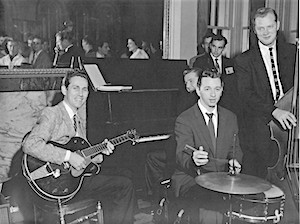 He supplemented his session work with ‘bump and grind’ work at a strip joint on a full drum set, with the evocative unison tom and snare beats that risqué style of dancing needed. In the recording studio though, his contribution to the sessions mostly meant playing a very cut-down drum set – often simply a snare drum! This must have been difficult for Buddy because, after his time with Roy Knapp he was evidently a very capable Big Band drummer. He persevered in the studios and came to the attention of Chet Atkins who was not only a great guitarist and recording artist, he was also a very busy Nashville record producer.
He supplemented his session work with ‘bump and grind’ work at a strip joint on a full drum set, with the evocative unison tom and snare beats that risqué style of dancing needed. In the recording studio though, his contribution to the sessions mostly meant playing a very cut-down drum set – often simply a snare drum! This must have been difficult for Buddy because, after his time with Roy Knapp he was evidently a very capable Big Band drummer. He persevered in the studios and came to the attention of Chet Atkins who was not only a great guitarist and recording artist, he was also a very busy Nashville record producer.
In the early days, as we’ve discussed earlier in this series, drums were a dirty word and simply not welcome in Country Music. The Grand Ole Opry, were he appeared with Carl Smith, wouldn’t allow drums and if someone of the stature of Elvis insisted, DJ Fontana would be allowed to set up his snare drum behind a curtain. In the fullness of time the drum embargo was lifted and eventually Buddy Harman actually became the house drummer at ‘The Opry’.
Chet Atkins didn’t share the opinion held within most of the world of Country and Western music that drums weren’t important – and he liked what he heard from Buddy Harman. And, where other producers wanted less drums, Chet actually wanted more. Among a great many other acts he was producing were the Everly Brothers who, while they certainly had a definite country music tinge also had a distinct rock ‘n’ roll edge.
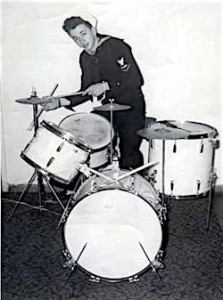 Among other great Everly Brothers records Buddy Harman played on “Cathy’s Clown”, and “Till I Kissed You”. Analysing his work shows he had a ‘touch’ which guys who were his contemporaries didn’t have – as the diversity of his list of hit records shows.
Among other great Everly Brothers records Buddy Harman played on “Cathy’s Clown”, and “Till I Kissed You”. Analysing his work shows he had a ‘touch’ which guys who were his contemporaries didn’t have – as the diversity of his list of hit records shows.
It’s a tidy step from Patsy Cline’s “Crazy” to the insistent snare drum fours on Roy Orbison’s “Pretty Woman” although, as I frequently seem to write: it’s not what you play it’s what you leave out! Buddy used to leave out a lot and interestingly checking his work I found he seldom crashed cymbals, nor did he play a lot of fills, although I’d never noticed.
He is credited with inventing the ‘country shuffle’ which he frequently played with a brush providing the straight (or dotted) eighth notes on the snare and a cross-stick providing the off-beat.
Buddy was part of an informal group of superlative players called ‘The A-Team’ who for a time ruled the roost over sessions in Nashville. These guys used a musical shorthand called ‘The Numbers System’ where chords were numbered, so could be changed easily by the bandleader holding up the number of fingers corresponding to the chord. Frequently these were written on a reporter’s-notebook sized piece of paper as Roman numerals.
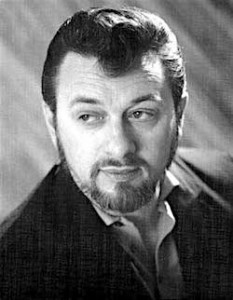 The list of tracks he played on is absolutely exhaustive but I’ll give you a taste of the people he’s played with and your first guess as to the names of the trailblazing, unforgettable tracks he played on with those artists which subsequently became household names, would probably be right!
The list of tracks he played on is absolutely exhaustive but I’ll give you a taste of the people he’s played with and your first guess as to the names of the trailblazing, unforgettable tracks he played on with those artists which subsequently became household names, would probably be right!
Here’s a very partial list of some of them with ladies first: Patsy Cline, Dolly Parton, Brenda Lee, Loretta Lynn, Connie Francis, Barbara Mandrell, Ann Margaret, Nancy Sinatra and Reba Mc Entire – it’s Buddy you hear a great deal every Christmas on “Rocking Around The Christmas Tree”. As far as the guys he worked with are concerned there were best-selling tracks with Elvis, Roy Orbison, Ray Price, Chet Atkins, Marty Robbins, Roger Miller, Don Gibson, Hank Snow, Johnny Burnette, Jimmy Dean, Flatt and Scruggs, Willie Nelson, Johnny Cash, Waylon Jennings, Kenny Rogers, Perry Como, Merle Haggard, George Jones, Eddy Arnold, Johnny Horton, not forgetting Simon and Garfunkel.
Just so’s you know what we’re dealing with here I’ll list the titles of just a few songs he contributed to. In no particular order: “Till I Kissed You”, “Sweet Nothin’s”, “Are You Lonesome Tonight”, “Only The Lonely”,” Running Scared”, “Little Sister”, “Marie’s The Name His Latest Flame”, “Crying”, “Dream Baby”, “A Big Hunk O’ Love”, “The Battle Of New Orleans”, “It’s Now Or Never”, “Ring Of Fire”, “Viva Las Vegas”, “King Of The Road”, “Sweet Dreams”, “Bye Bye Love”, “Stand By Your Man”, “Coal Miner’s Daughter” and “The Boxer”. If a lesson is needed, take a listen to the ‘train’ rhythm on Elvis’ “His Latest Flame’ then check-out the speed of the straight eights on the hi hats in the B-section!
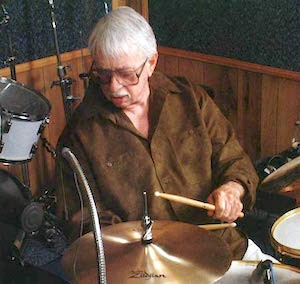 And Buddy Harman wasn’t just a drummer. He’s sometimes listed as playing ‘tuned’ percussion on various tracks and he seems to have played bass on Ringo’s Nashville album, “Beaucoups Of Blues”.
And Buddy Harman wasn’t just a drummer. He’s sometimes listed as playing ‘tuned’ percussion on various tracks and he seems to have played bass on Ringo’s Nashville album, “Beaucoups Of Blues”.
However after all this, when asked what his greatest achievement was he replied: “Having the privilege of playing for four of our nation’s presidents. They were: John Kennedy, Gerald Ford, Jimmy Carter and Ronald Reagan.
Buddy was left-handed and had a silver glitter Ludwig set which he kept in the RCA studios in Nashville while he shlepped all his supplementary drums to all the other studios around town. Professional cartage/porterage didn’t begin in Nashville until 1977, so there was no other way for anybody to take their drums to work around town without doing it themselves.
There are pictures of him with a Rogers, a Gretsch and a Pearl drum set although, just like many other early rock ‘n’ roll drummers, he often found himself making rhythms on cardboard boxes, guitar cases or even guitar necks.
I said he wasn’t into crash cymbals on his early sessions but he certainly had them on his kit, and they were made by Zildjian. Eventually he ended up with a 20” ‘A’ rock ride, 17” crash, 18” thin crash with rivets and a pair of 14” Mastersound hi-hats.
Buddy Harman died on August 21st 2008 and his obituaries spoke of him doing three sessions a day but many other Nashville musicians refute that statement – it seems he was actually doing four a day. The first sessions in Nashville started at 10am, the second at 2pm, the third at 6pm and the fourth at 10 pm. Having seen a partial list of the 18,000 tracks he played on I’m surprised he had time to eat and sleep. I know that barbers used to come to the studio to cut his hair and I’m guessing, with a schedule like that he ate a lot of meals in the studio – or in the car on his way to the next session.
Incidentally, I have come across two ways of spelling Buddy’s actual Christian name; Murrey or Murray. It’s up to you to pick the one you think is correct, although I’ve definitely seen his first name written more times with an ‘E’ in it than an ‘A’. I’m guessing once he got into his stride it didn’t matter and only his mother and father called him anything other than Buddy!
Bob Henrit
October 2016

